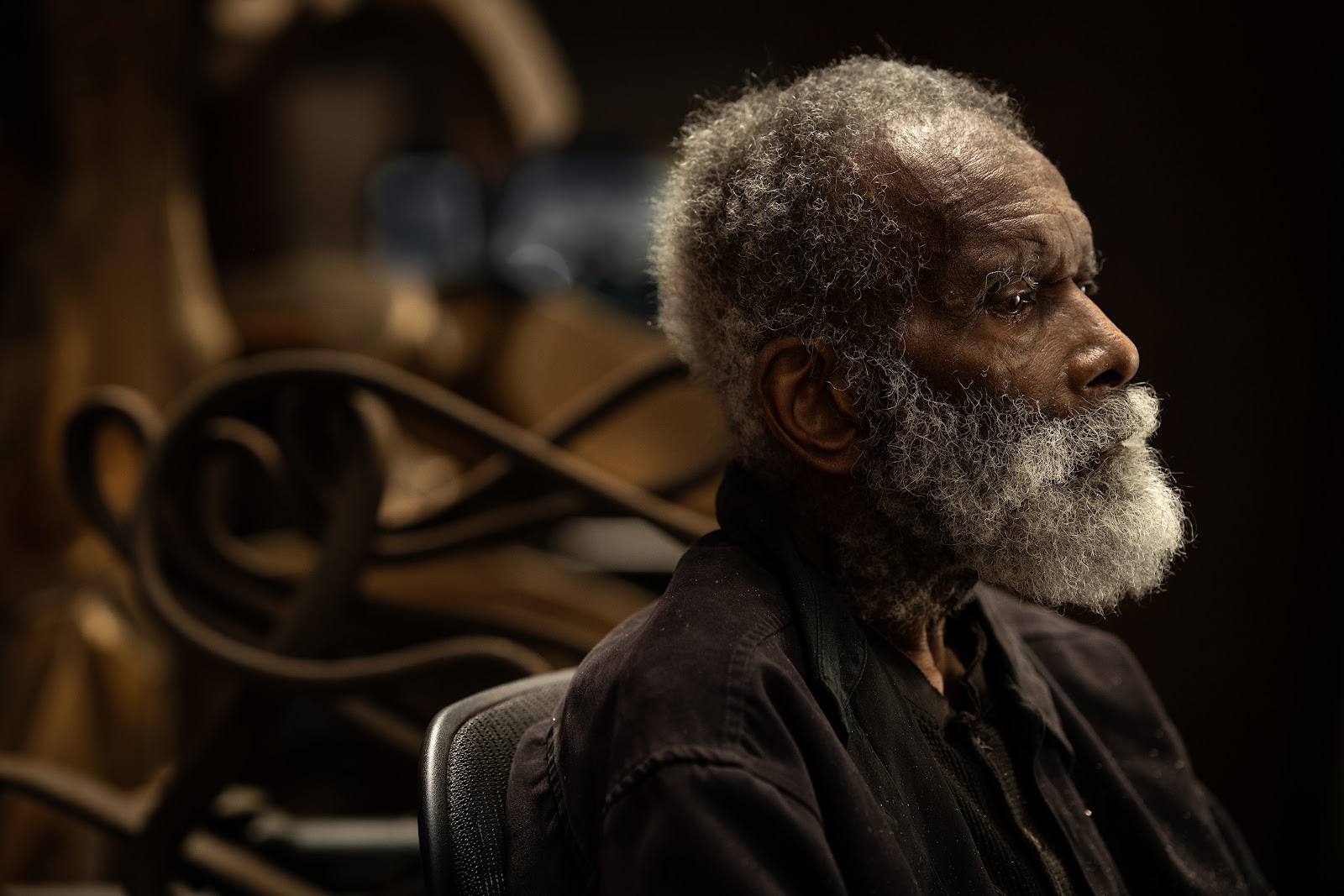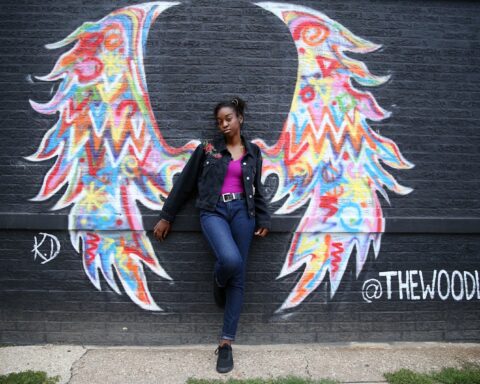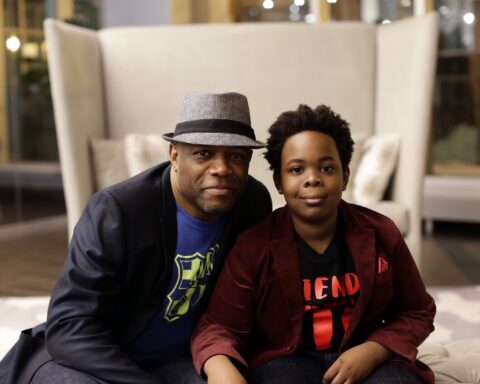Chicago sculptor Richard Hunt, whose abstract work includes the Ida B. Wells monument in Bronzeville and centerpieces at the Art Institute and in a Smithsonian museum, and whose art can be seen across the country, has died. He was 88.
He died at home Saturday in Chicago, according to a statement on his website, which did not specify a cause of death.
Hunt’s work has been recognized for the mark it has made on Chicago and the world. In Chicago, in addition to the Light of Truth Ida B. Wells National Monument, Hunt recently completed the sculptural model for a monument to Emmett Till, titled Hero Ascending, to be installed in 2024 at the Woodlawn home where Till lived with his mother before he was murdered during a 1955 trip to Mississippi.
Hunt’s Jacob’s Ladder fills the foyer at the Woodson Regional Library in the Washington Heights neighborhood. At the Art Institute, his Hero Construction (1958) is displayed in the Grand Staircase.
According to Hunt’s website, the sculptor attended Till’s funeral when he was 19; the moment shaped both his artistic work and his commitment to civil rights. His work has memorialized Martin Luther King Jr. (a sculpture in Memphis, Tennessee, called I Have Been to the Mountaintop) and African American educator Mary McLeod Bethune (From the Ground Up in Washington, D.C.). His bronze piece titled Swing Low hangs prominently at the Smithsonian’s National Museum of African American History and Culture in Washington as a monument to spirituals.
His artwork, primarily metal sculpture and large-scale public works, made such an impact that at age 35, Hunt became the first African American sculptor to have a retrospective exhibition at the Museum of Modern Art in New York in 1971.
“There’s so much love for Richard, it’s hard to be sad because everybody’s talking about how much they love Richard,” Ott said late Saturday.
Hunt was born on Chicago’s South Side on Sept. 12, 1935. According to the biography on his website, he was the descendant of slaves; his father was a barber, and his mother was the first Black librarian in Chicago. He grew up in Woodlawn and Englewood and had an interest in art from an early age, particularly in welded metal after seeing the exhibition “Sculpture of the Twentieth Century” at the Art Institute in 1953. He also credited the 1967 Picasso sculpture in Daley Plaza as an influence.
Hunt received a bachelor of arts degree from the School of the Art Institute in 1957 and traveled to Europe, marrying SAIC classmate Bettye Hunt in Florence. He served in the U.S. Army from 1958 to 1960. Their daughter, Cecilia, was born in 1962, though they divorced in 1966.
Once MoMA acquired one of his early pieces, Hunt became a young American artist to watch. He was the first African American visual artist to serve on the National Council on the Arts (the governing body of the National Endowment for the Arts), appointed in 1968 by President Lyndon Johnson.
“He essentially conquered the art world as a young man,” Ott said. “He’s 35 years old and he got the first retrospective at MoMA for an African American. Then he conquered the public art space. … If you look at his impact on the art and artists and his support for arts organizations, including the International Sculpture Center, which he was a board member of, and played such a critical role in their development, he was constantly giving of himself.”
Asked by the Tribune’s Darcel Rockett in August how he represents a figure such as Ida B. Wells in an abstract metal form, Hunt said, “I would say it comes forward to me as I’m working on it.”
Rockett interviewed Hunt when he was honored by the Chicago Public Library. Asked about a favorite piece, Hunt replied, “When you’ve done a lot of things, it’s hard to say ‘well, this is it.’ I’m very interested to be doing the Emmett Till piece.”
He was prolific as well as visionary. In addition to his work in Chicago, Hunt’s public art is displayed in 24 states and Washington, D.C., as well as in museums across the world.
His Light of Truth sculpture was unveiled in 2021 in Bronzeville on the former site of the Ida B. Wells Homes, a curling form in bronze standing 30 feet high. According to a Tribune story at the time by Christopher Borrelli, its title was taken from Wells, who said, “The way to right wrongs is to turn the light of truth upon them.”
Wells’ great-granddaughter Michelle Duster led the long-running campaign to get the sculpture built and raised its $300,000 cost. Hunt described the piece as being about “ascendence,” and said his parents spoke of Wells as “a model of an African American woman who made headway.”
In 2022, former President Barack Obama commissioned Hunt to create the work Book Bird as an anchor for the Obama Presidential Center.
Ott told the Tribune that Obama visited Hunt on Dec. 11. “Obama sat down next to him and told him how much that he and Michelle respected and admired him as a man and his work,” Ott said. “Having Obama show up at your bedside is pretty extraordinary.”
Artist and activist Theaster Gates was also an admirer. “I am saddened that we can’t share smiles on this plane anymore, but thankful for everything he’s given us all,” he said. “Richard made because he had to. His drive and singularity is from another time. I’m thankful for the intimate encounters we’ve had over the years.”
Amanda Williams, a celebrated Chicago artist also known for her public works and large-scale pieces that consider racial issues and architectural spaces, said late Saturday that she didn’t spend much time with Hunt until the last few years.
“But what struck me about him was, even at that late time in his career, how productive he was — he was more productive than me!” she said. “I remember asking him if he slowed down his work at all during the pandemic and he said, ‘Oh yeah, I did. I closed (my studio) at 5 p.m. on Sundays.’
“He had become a kind of ambassador for Chicago, making all these public works, and it’s mind-boggling to me how he was able to navigate so much bureaucracy and all the agencies involved — for decades. The dignity it takes. You gave to get around, get along, persuade, and he did it with (the Chicago Department of Transportation, the Illinois Department of Transportation), the Obama Foundation and so many others.”
The photographer and MacArthur Fellow Dawoud Bey told the Tribune Sunday that Hunt was a close friend. “Richard Hunt was one of my heroes, and I never missed an opportunity to shower him with love and respect. One of the best things for me about moving to Chicago was that I got to know Richard and to have a warm friendship with him,” Bey said. “He forged an expressive and nondidactic vocabulary for his sculptures, finding a way forward while broadening the forms available for Black expressive culture.”
In November, the international contemporary art gallery White Cube announced it would represent the artist. Sukanya Rajaratnam, global director of the gallery’s strategic market initiatives, said Hunt “has been a giant hiding in plain sight for decades.” White Cube will host a solo exhibition in spring 2024 in New York.
According to Ott, the exhibit will focus on the first two decades of his career, primarily works from his collection from the 1950s and ’60s.
“Most of them haven’t been seen for 50 years,” Ott said. “A few of them have been seen in the 2014 Chicago Cultural Center exhibition. But, certainly not his full private collection has never been on view. He wanted to live with those pieces during his lifetime, but then he was ready to part with them and think about his legacy.”
The Getty Research Institute acquired Hunt’s archives, including sketchbooks, blueprints and wax models, in 2022. Hunt also established the nonprofit Richard Hunt Legacy Foundation, launched this month to advance public awareness of his art.
“The lasting legacy of Mr. Hunt will obviously live on through the impressive and vast body of work he leaves behind adorning our city and the world,” said Michelle Boone, president of the Poetry Foundation. “But his true legacy will be found in the lasting impression he left as a human being. He was a gentle soul but was fiercely committed to work, hard work. He inspired generations of artists with his work ethic and sense of community. He elevated the meaning of ‘public art’ to new levels and our neighborhoods and communities are all the richer for it.”
New Hunt sculptures slated to be installed in 2024 include Hero Ascending and a piece titled Rise Up that was inspired by the murder of George Floyd. Ott said that work is going to be installed at Morehouse College in Atlanta. And a piece titled Rising Opportunities is to be installed in new Chicago headquarters for the Discovery Partners Institute.
“He let his work speak for himself,” Ott said. “He wasn’t bombastic. He was intellectual. He was humble, but he knew what he was doing was important.”
Hunt is survived by daughter, Cecilia, an artist, and his sister, Marian, a retired librarian, both of whom live in Chicago. A public memorial will be held in the spring, on dates to be announced later.






